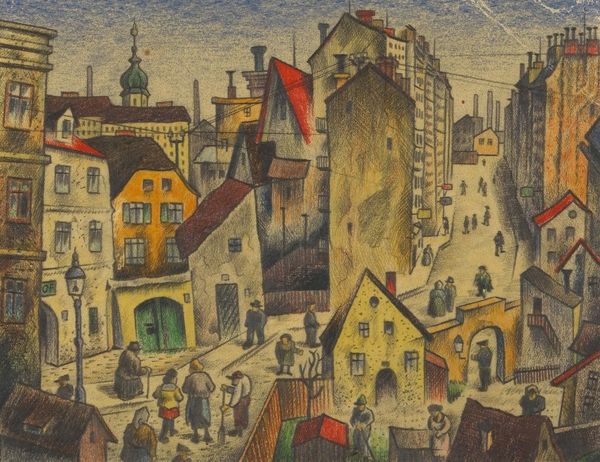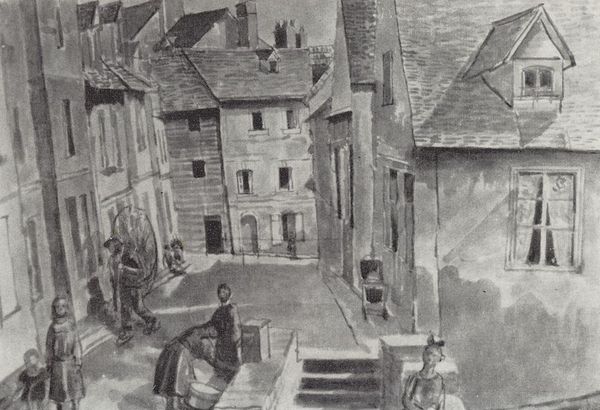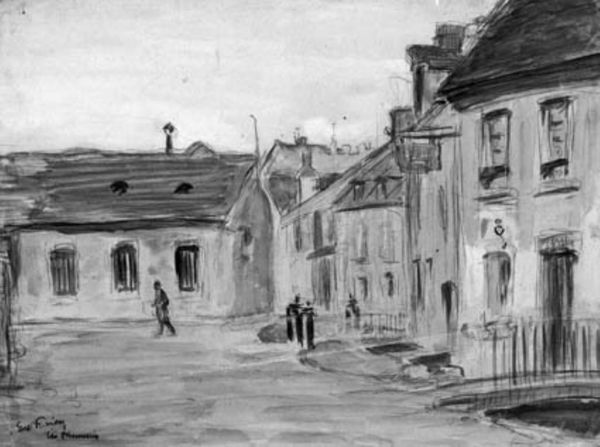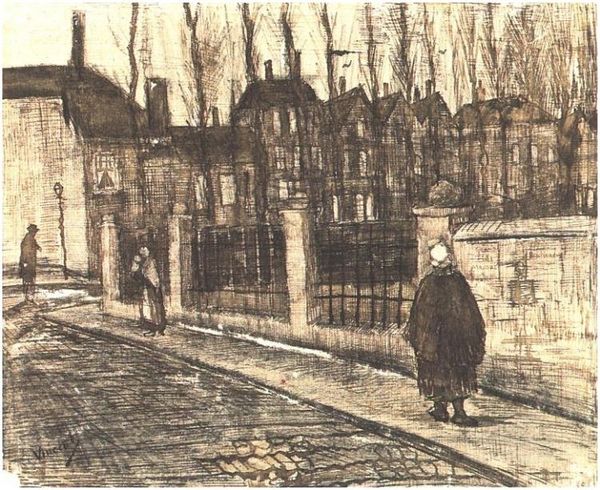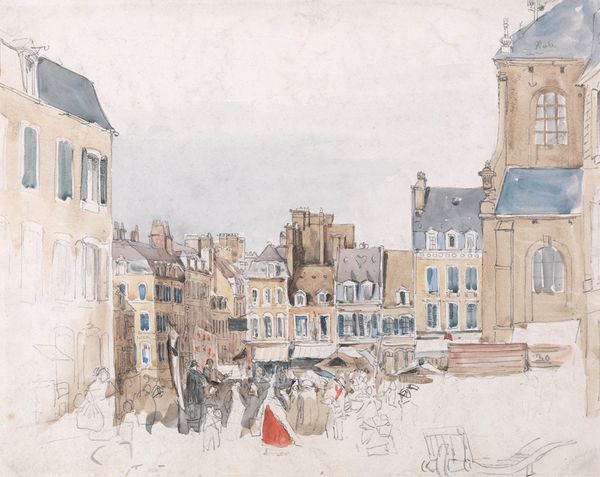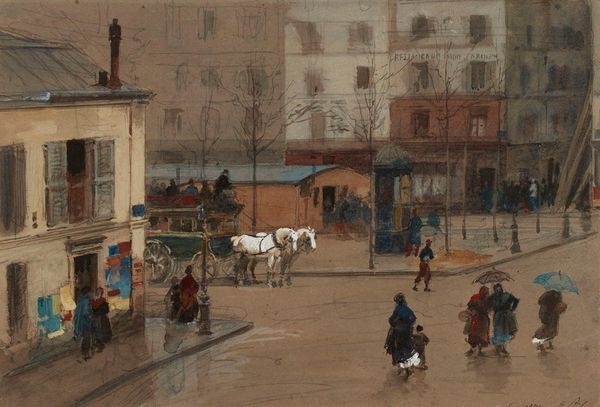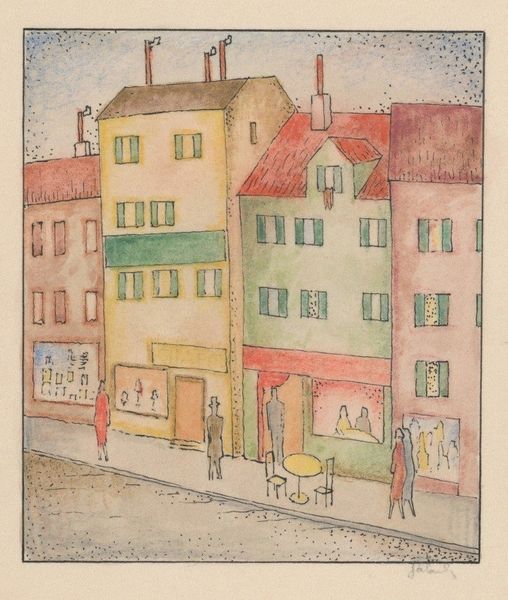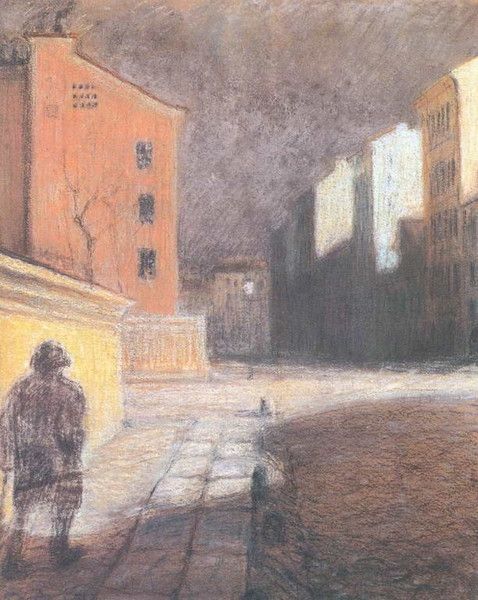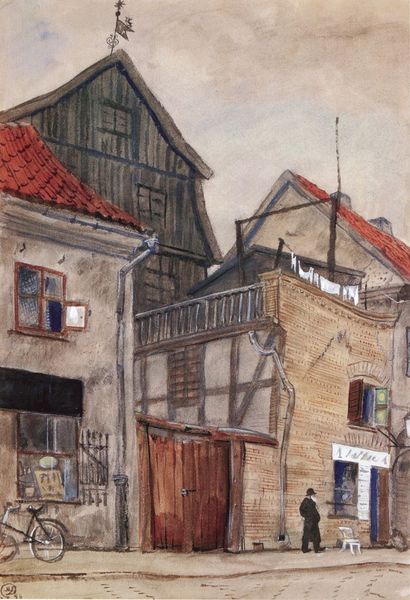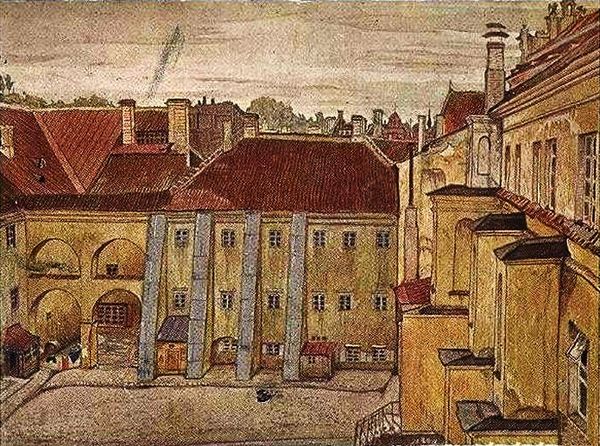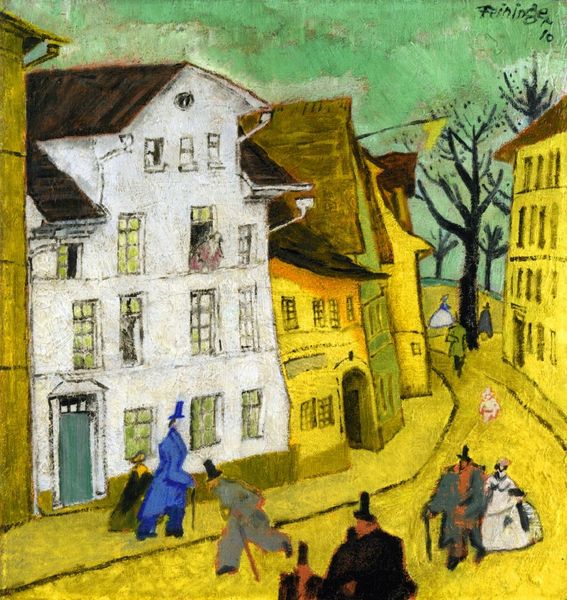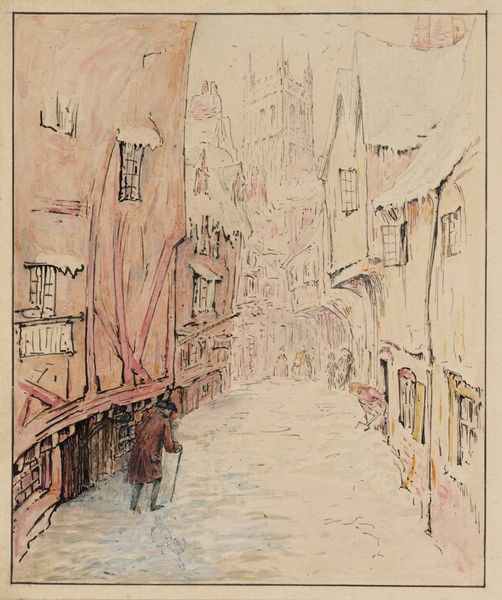
plein-air, watercolor
#
impressionism
#
plein-air
#
pencil sketch
#
landscape
#
figuration
#
watercolor
#
coloured pencil
#
cityscape
#
watercolour bleed
#
watercolour illustration
#
watercolor
Copyright: Iosif Iser,Fair Use
Editor: This is Iosif Iser’s "Plaza in Montmartre," created using watercolor and pencil in a plein-air style. It feels subdued, almost dreamlike, due to the muted tones and sketch-like quality. How do you interpret this work, especially considering its setting in Montmartre? Curator: The "dreamlike" quality you mention strikes me as significant. Montmartre was, and arguably still is, a site of bohemian idealism. Yet, Iser's muted palette seems to push against the stereotype of Parisian exuberance. Considering the figures depicted, notice how they are primarily women. How might we read this depiction of women in a public space? Editor: They appear isolated, almost somber, despite being in a bustling plaza. It makes me wonder about their experiences, their roles in this society... Curator: Exactly. Iser, as an artist from Romania who spent time in Paris, was undoubtedly observing and interpreting the social dynamics around him. He presents a potentially critical view of the societal constraints placed upon these women, emphasizing the psychological weight carried by individuals in urban environments. How might his outsider perspective have influenced this representation? Editor: Perhaps being an outsider allowed him to see subtleties that someone immersed in Parisian life might have missed? To see the undercurrents of daily life rather than just the surface. Curator: Precisely. It allows for a commentary on the socio-political context, maybe pointing at a subdued defiance in the quiet existence of these figures. His impressionistic handling might underscore the transient, subjective nature of their experience. Editor: I hadn’t considered that Iser’s own background could provide a lens through which to examine the everyday lives of the women he depicted. It’s like the artistic style underscores a hidden narrative, if only we know to search for it. Curator: Indeed, the act of seeing, like the creation of art itself, becomes an intersectional dialogue of experiences, history and interpretation. The subdued hues of this plein-air painting encourage a thoughtful reconsideration of visibility, agency, and the everyday lives represented.
Comments
No comments
Be the first to comment and join the conversation on the ultimate creative platform.

